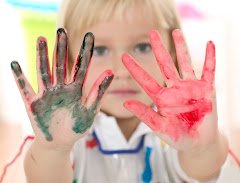Dr. Janet Patti, who is a founding member of the Leadership Team of the Collaborative for Academic Social Emotional Learning and a professor of Education Administration and Supervision Program at Hunter College, spoke to us during the Wednesday session of the Governor’s Institute for Early Learning. Her topic was Creating Caring and Safe Communities of Learning. She discussed building learning communities in Schools, but her focus was on the importance of Emotional Intelligence Theory and ways teachers can build emotional intelligence and social skills in children. She made us aware of the dramatic impact early childhood teachers can make on a child’s future. I found the statistics about the effects of using social emotional programs in schools significant. Research shows that 44%of the children will have better test scores and there will be a 30% reduction in disruptive and aggressive behaviors. It is easy to see how these go hand in hand. Teachers who need to spend less time handling disruptive behaviors can spend more time teaching which benefit all children. And on the other side, if children are not engaged in disruptive behaviors, they are more likely to be engaged in learning. Teachers have a responsibility to make sure all children feel included and safe in the classroom.
Dr. Patti encouraged teachers to reflect on how a teacher who is adept at teaching social -emotional skills teaches. She suggested that teachers need to examine themselves to determine how they would like their classrooms to look and how they themselves would like to teach.
Just as it is important for teachers to look at themselves and their own feelings, they need to help students learn about their own feelings. Teachers need to teach children how to problem solve. I thought I was doing this well, but after hearing her talk, I realized that just because one child come up with a solution or compromise, I need to make sure that solution also works for all children involved. For instance, after one child tries to take a toy from another, the child who is the taker may problem solve that the two can play with the toy together. I often forget to ask the victim, if that is ok. Maybe that child had other plans or would like to finish and then give the toy to the first child. Helping victims stand up for themselves is just as important as curbing aggressive behaviors.
For more information visit the CASEL website. It has a wealth of information to help teachers from Pre-K to high school. www.casel.org

Subscribe to:
Post Comments (Atom)


No comments:
Post a Comment